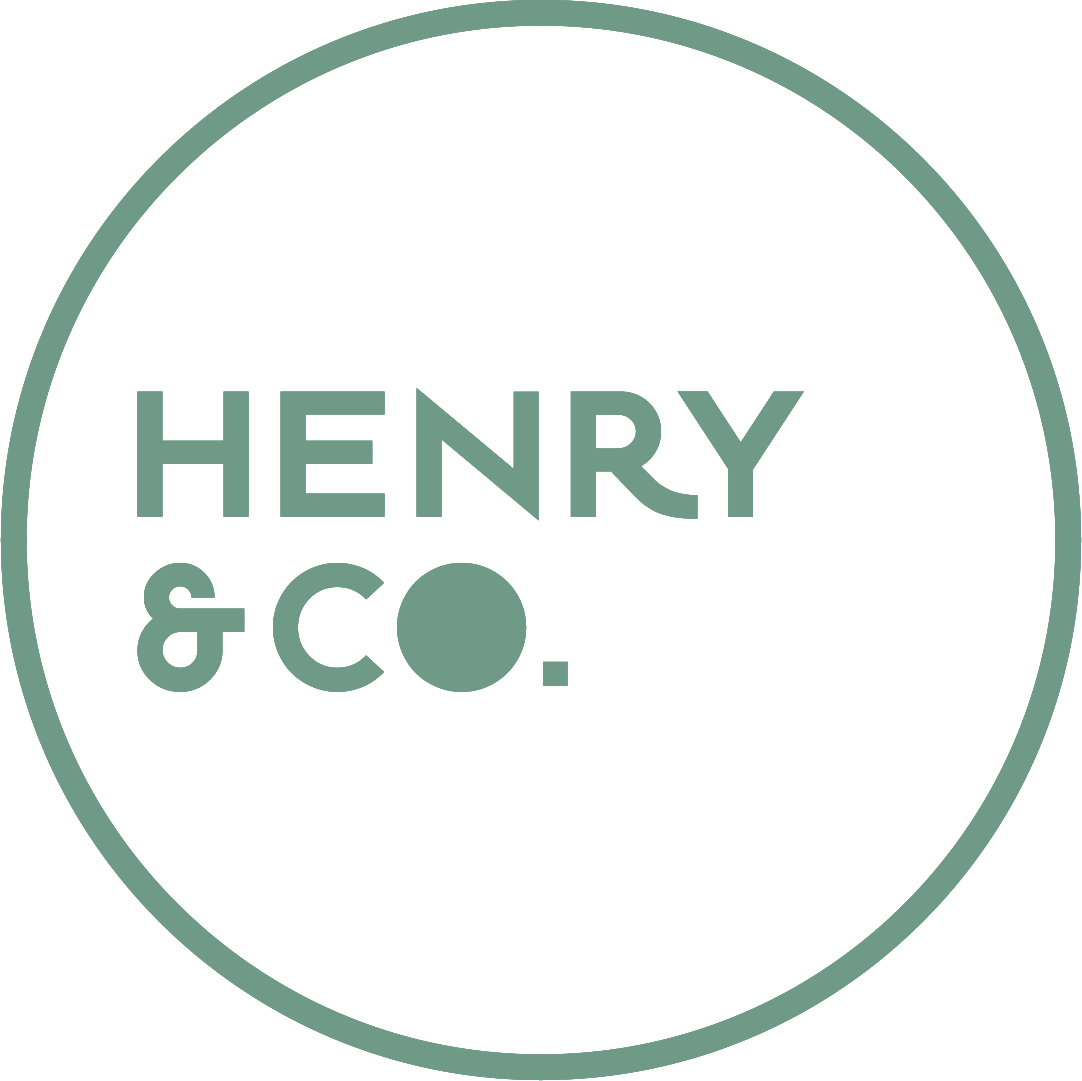The use of sustainable materials for product creation (or redesign) is a source of value for companies. It is one of the ways they can demonstrate their commitment to integrating sustainability, gaining reputational and economic advantages.
According to the European Commission, 80% of a product’s environmental impact is determined at the design stage. Therefore, it is necessary to adopt a sustainable design approach that considers every aspect of a product’s creation. In one word: ecodesign, or sustainable design.
But what specifically are eco-sustainable materials? Through our experience, we at HENRY & CO. will answer this and other questions. Keep reading!
1. What is meant by sustainable materials in design?
Eco-sustainable materials are essential in ecodesign (do you know what ecodesign is?), which integrates performance and economic considerations with attention to sustainability at every stage of the creation and existence of an object.
Sustainable design enables the creation of sustainable products through holistic and structured assessments, where material selection is crucial. The materials must have a low environmental impact during every stage of their life cycle.
Sustainable materials may be recycled and/or recyclable, compostable, biodegradable, long-lasting, and reusable. Some examples of materials used in sustainable design include: linoleum, cork, bamboo, glass, plastic, wood, paper, jute.
2. What are the requirements for sustainable materials?
For materials to be considered sustainable, they must meet specific requirements in terms of environmental, social, and economic sustainability:
- Sustainable materials must have a low environmental impact. They should be non-toxic, long-lasting, and adaptable for recycling or reuse. Thus, even if disposed of, they won’t be harmful substances capable of damaging the environment or human health.
- They should come from natural raw materials, recycled/recyclable, renewable, and extracted and processed using clean methods.
- An additional requirement pertains to accessibility. The ability to use these materials must be available to everyone, not just those with the financial means to access them.

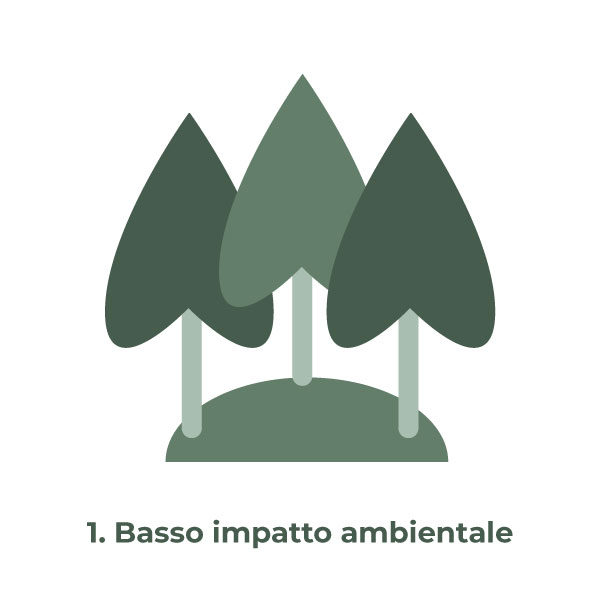
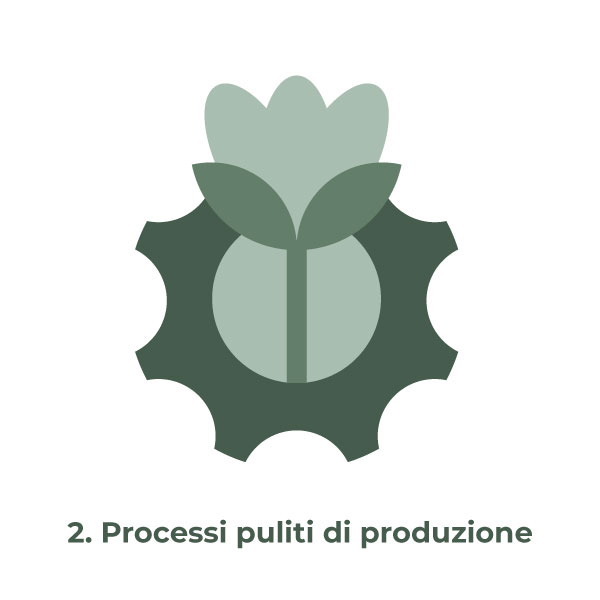
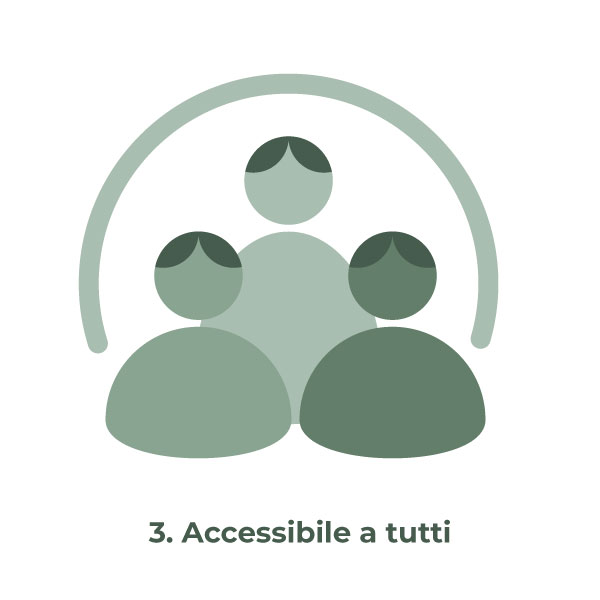
Choosing eco-sustainable materials that meet these criteria guarantees companies a truly sustainable offering. To demonstrate this to consumers, businesses can rely on tools such as environmental labels and certifications. Among these, for example, is the EU Ecolabel, which is the “European Union’s ecological quality mark.”
3. How to calculate the impact of eco-sustainable materials in design?
From a sustainable design perspective, it is essential that material selection for a product be based on recognized methods such as LCA.
LCA (Life Cycle Assessment) is a structured and internationally standardized methodology that allows companies to identify and quantify the impacts on the environment and human health associated with a product’s entire life cycle.
Companies must rely on design agencies that have expertise and experience in this area, which are not always guaranteed. LCA assessments and sustainable design are the strengths of HENRY & CO., tools through which we successfully support our clients.
If you want to bring sustainable products to life, contact us to find out how we can help you!
4. What characteristics should packaging made from sustainable materials have?
To be considered sustainable, packaging must:
- be safe and appropriate for its content;
- be practical for consumers and vendors;
- effectively communicate information about its content and components;
- reflect the brand identity and display environmental certificates and labels;
- guarantee high sustainability performance, both in terms of the substances used (sustainable and eco materials) and how it’s used and produced (eco-design, reuse, recycling, weight reduction, and component minimization, etc.).
5. What are the eco-sustainable materials used in design?
More and more companies are changing their approach to packaging, and the market offers many examples of sustainability and circularity. Some opt for more traditional materials, while others experiment with innovative solutions like mushroom-based packaging for Adidas Ozlucent. Other innovative eco-sustainable materials used in this field include cellulose pulp, algae-based substances, and compostable bioplastics.
In an ecodesign perspective, what matters most in a sustainable material is its environmental performance throughout its life stages (before, during, and after), or in other words, the types and amounts of impact it generates on the environment. For this reason, broader evaluations than just considering the characteristics of a substance at the moment it is encountered are necessary.
6. What are the advantages of using packaging made from sustainable materials?
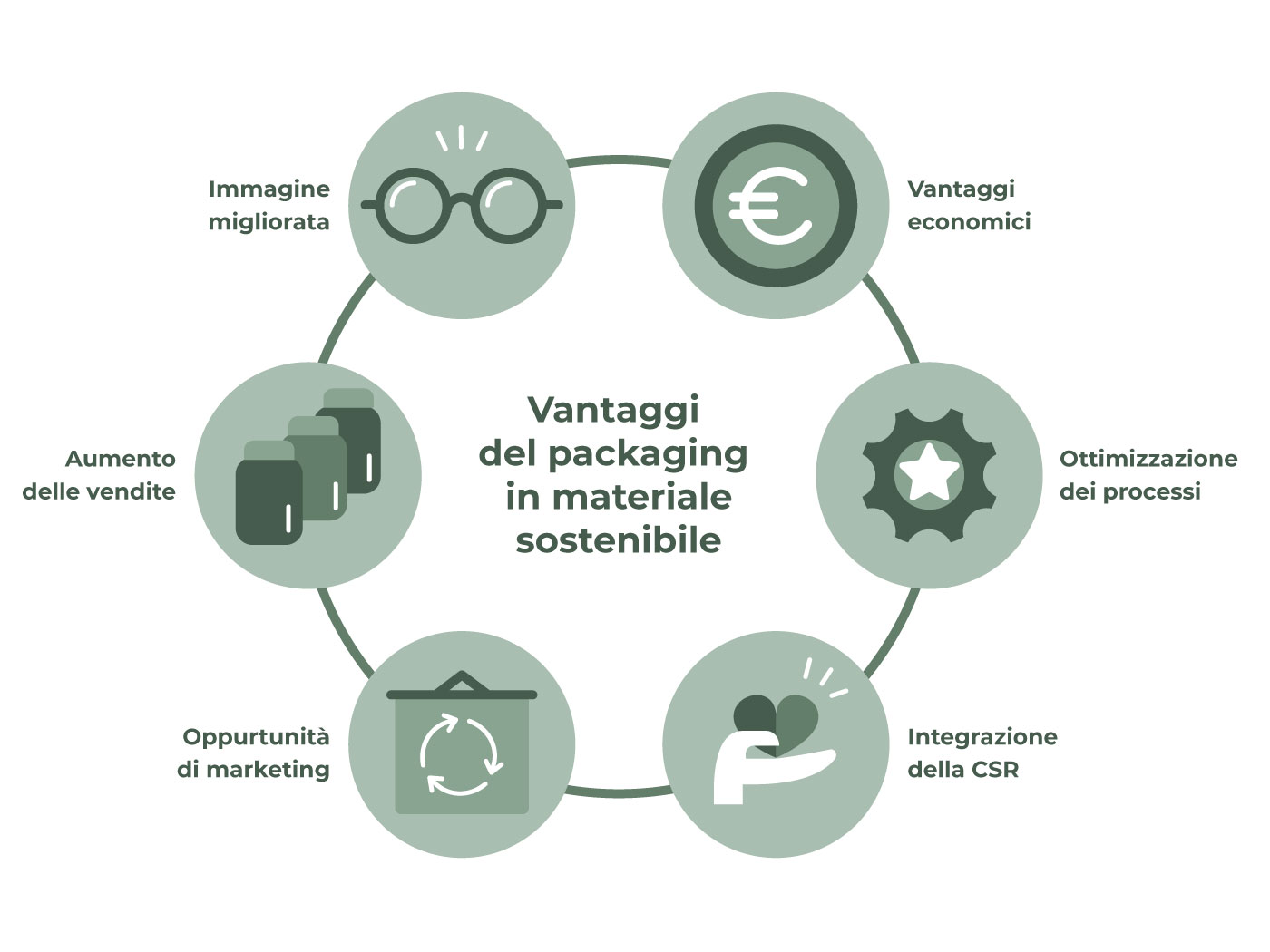
Adopting packaging made from eco-sustainable materials allows companies to:
- improve their image;
- gain reputational and economic advantages;
- optimize strategies and processes through more conscious use of available resources;
- work towards CSR (Corporate Social Responsibility);
- explore new marketing opportunities, such as the prolonged brand-consumer relationship provided by reusable packaging;
- increase sales, considering that, as reported by the second European Consumer Packaging Perceptions Study, more than six in ten consumers admit that the environmental impact of packaging influences their purchasing decisions.
7. Examples of design using eco-sustainable materials: the case of Ikea
IKEA is a successful example of integrating sustainability through eco-designed products and packaging using eco-sustainable materials. The Swedish giant is based on the concept of “democratic design,” aiming to create products “that have a beautiful design, good functionality, are sustainable, high-quality and available at a low price.”


For several years now, IKEA packaging has been undergoing sustainability transformations, which saved €1.2 million in packaging costs in 2015. The major changes involve using plant-based materials instead of plastic, and improving cardboard packaging. As of 2019, over 92% of the 900,000 tonnes of packaging produced per year is fiber-based and largely recyclable.
Regarding products, IKEA’s goal for 2030 is to use only renewable or recycled materials, which currently make up 60% and 10% respectively of the materials used. The company is also integrating circularity assessments into product design, making standardized components for different products. In this case, “the goal is to make most products 100% circular, or at least recyclable,” as stated by Laura Tondi, Sustainability Manager at IKEA Italy, in an interview with Mark Up 315.
The company’s commitment also extends to a fundamental component of sustainability: accessibility. In the words of Asunta Enrile, CEO of IKEA Italy and Chief Sustainability Officer, as told to Interni Magazine, “Just as we democratized design, our challenge now is to make sustainable choices accessible to all.”
8. The challenge of sustainable materials: what HENRY & CO. can do for your company
An offering designed (or redesigned) through ecodesign and based on sustainable materials is a growth and development opportunity that businesses cannot afford to miss.
At HENRY & CO., you will find the expertise and skills you need to create or rethink your business products in a sustainable and circular manner. By evaluating the specific characteristics of your case, we can provide you with the most suitable solution to meet your needs. This way, you can achieve high-value results and steer your company’s growth towards sustainability.
